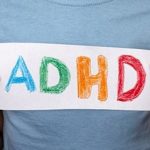
Immigration has become a contentious topic in America, but new research shows the heated debate on the issue may be stressing out Hispanics across the country, whether they are citizens or not. After analyzing data from 2011-2018, the researchers discovered that, over time, there has an increase in psychological distress among all Hispanics as U.S. immigration policies came under fire. For example, when President Barack Obama signed the Deferred Action for Childhood Arrivals (DACA) into law, that relieved distress for many naturalized citizens. But the Trump presidency had the opposite effect, triggering anxiety and depressive symptoms among Hispanic noncitizens, the researchers said. But apart from federal policies on immigration, even the continuing public debate on the issue has taken a toll. “How people are talking about immigration and how salient immigration and deportation are to day-to-day life is potentially equally as important to distress as these more dramatic changes and events, like the Trump election or DACA,” said study co-author Amy Johnson, an assistant professor of sociology and anthropology at Lehigh University in Pennsylvania. And those fears were felt whether a Hispanic person faced possible deportation or not: Using Google Trends, the researchers show that U.S.-born Hispanics experienced higher distress in periods where there were spikes in Google searches on topics related to deportation and immigration. The findings were published Feb. 19 in the Proceeding… read on > read on >


















